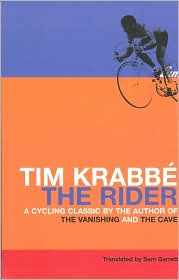 David Biro
David Biro has a medical degree from Columbia University and a doctorate in English Literature from Oxford University. He is an Associate Professor of Dermatology at SUNY Downstate Medical Center in Brooklyn, New York. He also teaches in the medical humanities division there, directing a course on medicine and literature.
Biro’s first book,
One Hundred Days: My Unexpected Journey from Doctor to Patient, chronicles his experience undergoing a bone marrow transplant. His second book is
The Language of Pain: Finding Words, Compassion, and Relief. His articles have been published in various medical journals as well as the
New York Times Magazine,
Slate, and the
Philadelphia Inquirer.
He shared a list of five books on pain with Daisy Banks at FiveBooks, including:
The Body in Pain: The Making and Unmaking of the World by Elaine Scarry
Let’s move on to your next book, The Body in Pain by Elaine Scarry, which discusses people in pain and people who cause pain.
This book left a profound mark on me and actually inspired me to write about pain myself. I love its thoughtfulness and poetic style, its interdisciplinary nature and the fact that a scholar of literature has so much to say about the world outside the academy.
Scarry starts out with two main premises. Number one, that pain is not merely indescribable but that it actively destroys language, reducing the sufferer to a state before language, to primal screams. The second premise is that pain radically separates the sufferer from the observer of pain. For the sufferer, pain is the prototype of certainty – there’s no way to doubt that you have pain. But it is the exact opposite for those who observe a person in pain. How can we be really sure another person is in pain? Scarry then goes on to explore the far-reaching consequences of these two observations, in medicine, in torture, and in war.
So there is this idea that the people who are torturing have a licence to do it because they can easily choose not to see their victim’s pain?
Yes, and also because the victim is often voiceless. In torture and in war, there is an enormous toll of pain which goes unnoticed or misrepresented and which can then be used to substantiate the power of the torturer or the regime or the warring state. It’s probably not difficult to imagine how these two problems of pain – its inexpressibility and unverifiability – can also have a negative impact in the field of medicine.
You have written about this as well. Why do you think it is so important to be able to describe your pain as precisely as possible?
If patients can’t communicate their pain well and physicians harbour doubts just like other observers, then there’s a good chance medicine won’t always be so effective at alleviating pain. And unfortunately this is indeed the case – the under-treatment of pain is well-documented in medical literature, and a large part of this has to do with failures in communication.
 On the other hand, if patients can provide good descriptions of their pain, and if doctors can help them do so and are willing to listen, those descriptions can be as useful in pinpointing the source of pain as an abnormality seen on a CAT scan or X-ray.
On the other hand, if patients can provide good descriptions of their pain, and if doctors can help them do so and are willing to listen, those descriptions can be as useful in pinpointing the source of pain as an abnormality seen on a CAT scan or X-ray.
How would you encourage people to articulate their pain as successfully as possible?
Well this is the flipside of Scarry’s book. While she talks a lot about the world-destroying aspects of pain, she also talks about the world-building capacity which we might summon in response to pain. That capacity depends upon the imagination and metaphor.
Because pain is so blurry – perceptually and conceptually – there’s nothing to point to or grab on to. So the only way to go is to fill the blur with objects that we can see and describe. We are forced to speak of pain in terms of other, more visible objects, ie we are forced to speak metaphorically. The most common metaphor of pain is the weapon. We say, for example, that pain is shooting or stabbing or crushing.
When you think about it, these words are all being used metaphorically – since most of the time we haven’t been shot or stabbed or crushed but are just imagining that something like this must be happening. So one way of talking about pain is to talk about guns, knives, and hammers, or the damage those weapons can inflict on the human body. There are also other ways to represent pain metaphorically which I discuss in my book. The bottom line is that we have to be exceptionally imaginative when it comes to pain or else it will remain incommunicable and invisible, not only for the sufferer but also for friends and doctors trying to help.
Read about
the other books on Biro's list.
--Marshal Zeringue
Let's Take the Long Way Home by Gail Caldwell












































